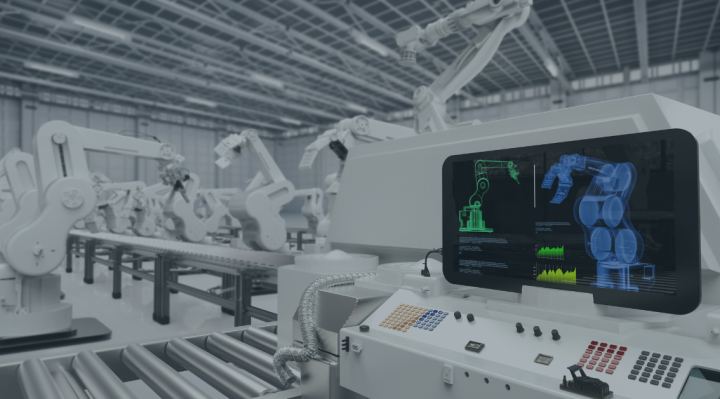Engineering change management – the definition
Engineering change management is based on the correct handling of an Engineering Change Order. Engineering Change Order (ECO), which is a document that specifies proposed changes to existing products. ECOs include changes to be done directly to the product (e.g., change of material in the BOM, in assembly, or in tech materials) or in the production process (e.g., the production sequence, an additional process, or its different setting).
The engineering change order is executed through a dedicated process in the IT system, from where the information about the order is sent, among others, to engineering teams, quality, supply, and manufacturing teams. If the change involves a material used so far, the supply chain partners are also notified about such an intention. Each informed individual is responsible for determining the impact of the change and whether the ECO can be implemented as planned and on time.
Process members approve or reject the change. Implementation activities can be undertaken once all the interested parties have accepted the ECO.
The objective of the engineering change
The purpose of engineering changes is product development or optimization. In addition to improving the product parameters or improving manufacturing, modifications may also be driven by product lifecycle and component market dynamics:
- The original material specified in the BOM is no longer available on the market because it has become obsolete, so a replacement must be introduced in its place. If the replacement replaces it permanently, it must be processed according to the ECO.
- When it is possible to replace the material with a cheaper substitute with the same parameters, the change does not affect the product's quality.
Engineering change management in practice
ECO servicing is initiated by submitting an Engineering Change Request, ECR. The ECR may be submitted by the client, in which case the ECO changes are based on the client's guidelines, and the EMS manufacturer implements them according to the provisions of the agreed engineering change order. Simultaneously, it does not exclude the possibility of a supplier proposing modifications. However, such a step each time requires an acceptance from the client to make any modernization of the product or its production method.
A reliable EMS provider shall not arbitrarily implement any changes to a product. The client's specification is always the primary point of reference for them. A good EMS supplier also always reviews the change order with the client before commencing the implementation process. This allows them to avoid misunderstandings and ensures that the change is well understood.
This, in turn, allows for a smooth commencement of the ECO implementation process. It is coordinated by a dedicated project manager (usually a product engineer). The change process is signaled at every level of the production process that can affect its effective implementation (e.g., purchasing, manufacturing). All the cells indicated in such a manner confirm the feasibility of such implementation and accept it.
A good EMS supplier keeps complete product records, including a history of changes to the product. This way, the client always has access to the ECO history of their products, manufactured in cooperation with a good EMS. In the case of material changes, this is particularly important because their records affect the Bill of Materials' contents, BOM.
Verification of an engineering change
The implementation of ECO by a good EMS supplier is preceded by a verification process. It includes the content of the document and what it ultimately affects, among other things, it requires rechecking costs, identifying the lead time for new materials and their impact on the time of manufacturing, and delivering the final product to the client.
Only after these additional issues are resolved is the new manual properly prepared for manufacturing, the SMT/THT machines are reprogrammed to follow new schematics, and the changes commence.
The impact of ECO on manufacturing costs
Engineering change management is not only about the smooth implementation of an ECO within the optimal, assumed time frame. If a material change occurs during an engineering change, previously used components are automatically no longer needed. The stock of this unused material is left over and therefore generates unnecessary financial commitment for the client.
In this case, a good EMS supplier will ask the client, before starting retrofit work, whether he wants to use up the material and only then implement the new material, or whether he prefers to go straight into manufacturing using the semi-finished product ordered from ECO when the implementation of the ECO is critical and requires immediate implementation.
What should an ECO note contain?
A well-prepared ECO note includes a description, giving a complete picture of the desired modifications to be made, consisting of elements such as:
- The name of the product affected
- A description of the change, which, in addition to the description of the planned changes themselves, should also include an analysis – identification of changes, reasons for changes; as well as the cost and impact of the change
- A list of documents covered by the change, e.g., the BOM
- Approval of the change
- The application date – an indication of when to implement the change
- The condition of the implementation, i.e., whether it is to be done after the stock of materials being replaced has been exhausted or whether the EMS supplier is dealing with a critical implementation that must be done immediately
The more carefully prepared, more detailed an engineering change order is, the more effective and faster its provisions will be implemented. However, the key to success here is a well-organized process and consistent management within accepted procedures. Therefore, a right EMS supplier ensures that all the parties interested involved in the ECO (e.g., procurement, manufacturing, engineering) have accepted the change and are only just beginning the actual implementation and that the client receives high-quality service.







